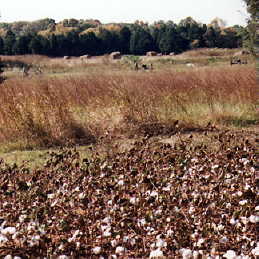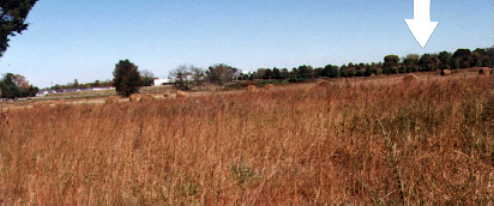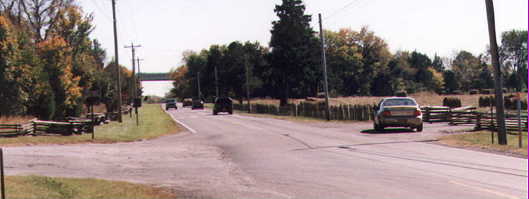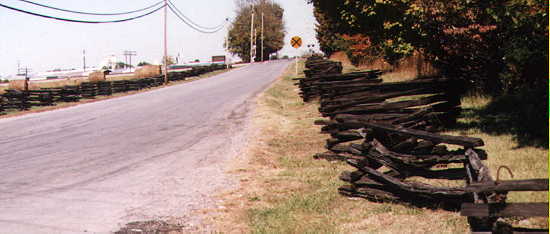
From mid-November through late December 1862, the 24th Ohio Infantry Regiment camped near Nashville, Tennessee. Major General William Starke Rosecrans, the new commander of the Department of the Cumberland, had been displeased with the previous department commander's lackadaisical resolve to accumulate information about the local roads and locations of key Confederate outposts. Rosecrans put into effect a standing order that lasted through the remainder of the war whereby every brigade, division, and corps in the Army of the Cumberland would have one officer designated as a topographical engineer. As a result, the army would accumulate information rapidly.
By late, December 1862, Rosecrans was confident that he had sufficient knowledge of Middle Tennessee and his opponent's forces. On Christmas Day, 1862, Sergeant George B. Ridenour of the Sixth Ohio Volunteer Infantry Regiment noted in a letter that war drums were sounding near his camp. The beat of the drums indicated that some of the camps were already preparing for a march to Murfreesboro on the following day.
The blue army slogged southeast through a driving rain toward Murfreesboro. The rain and bitter cold was not their only opponent, as the soldiers were also fighting a continuous skirmish with Confederate cavalry. Several members of the 24th Ohio noted that they were often at the front during the march, so they participated frequently in these skirmishes.
By December 30, 1862, Major General Thomas Lafayette Crittenden's wing of Rosecrans' army had advanced close to Murfreesboro. Batteries H & M of the 4th U. S. Artillery unlimbered their cannons in a cotton field and fired salvos at intervals all day long while probing for the enemy positions. The 24th Ohio Regiment, part of Colonel William Grose's Brigade, supported the batteries during the afternoon and evening of the 30th. By the end of the day, Colonel Grose and Major General John M. Palmer were certain that the enemy was in force all along their front. Also, the Confederates did not appear to be withdrawing, an almost certain indication that there would be fighting on the morrow.

Before daylight, Grose's Brigade was relieved from their advanced position, so they started out the morning in an unpicked cotton field between Batteries H & M of the 4th U.S. Artillery and the Nashville Pike. The brigade would be the reserve for Palmer's Division, so members of the 24th Regiment did not anticipate much action very early. But that soon changed.
About daylight, cannon and gun fire was heard to the right of Rosecrans' army, and by 8 a.m., the sounds of battle were steadily getting louder as the battle approached Palmer's Division. Soon, Colonel Grose issued orders for his brigade to advance south into the woods in support of Brigadier General Charles Cruft's Brigade and Colonel William B. Hazen's two brigades.

Before the 24th Ohio could reach the woods directly south of their campsite, however, Batteries H & M of the 4th U. S. Artillery shifted their position to face westward and opened fire on Confederates who had broken Brigadier General James S. Negley's Division on their right. A large Confederate force, having penetrated the Union line, advanced uncontested toward Grose's right and rear. Colonel Frederick C. Jones saw the breakthrough and at once ordered the 24th Ohio Infantry Regiment to about face, and march to the rear 150 paces. Then, coolly shifting his regimental front to face west, Colonel Jones ordered his men to fire into the flank of the advancing Confederates. The combined fire from the 24th OVI, Batteries H & M, and other regiments, struck the flanks of the unsupported but still advancing Confederate brigade. The unleashed firepower killed Confederate Brigadier James E. Rains and wounded many Confederates, forcing the withdrawal of the withered Confederate command. The 24th Ohio Regiment then advanced and claimed about 200 Confederate prisoners while restoring order to this portion of the Union battleline.

Colonel Grose now ordered the 24th Ohio back north across the cotton field to a position near the Nashville Pike as additional support for Colonel Hazen's Brigade in a heavily wooded area. Here, at about 11 a.m., the veterans of the 24th Ohio expected to receive their first rest of the day.

Confederate General Braxton Bragg had other plans for them, however. Having achieved success all along the Confederate left flank early in the morning, Bragg turned his attention to the Confederate right where his early attacks had fizzled so far. Now, Bragg concentrated his forces for a crushing blow along this portion of the line. However, what he got was series of assaults delivered against a wooded area which some called the "Round Forest." Others described it as "hell's half-acre." Colonel William B. Hazen had withdrawn his brigade to this timber lot after elements of Confederate Generals John Withers' and Frank Cheatham's Divisions had launched several piecemeal attacks on Hazen's advanced position earlier that morning.


As elements of fresh Confederate brigades advanced through the corn and cotton fields toward the Round Forest, the 24th OVI braced for the assault. Having fought in the very intense counter-attack against Rains' Confederate Brigade earlier that morning, the 24th Ohio Regiment was now low on ammunition. Aware of his potential resupply problems, Colonel Jones ordered his soldiers to lie down along the Nashville Pike and hold their fire. After a few minutes, the Confederate battle line had nearly reached the 24th Ohio Regiment's position at the Nashville Pike. The urge to open fire without orders must have passed through every soldier's mind. Still, Jones waited. The veterans were anxious, for in just a few more seconds, they would be engaged in a hand-to-hand struggle. Then, came the long anticipated word -- "Fire." The veterans of the 24th Ohio poured a point blank volley into the Confederate ranks right at the edge of the Nashville Pike. Hundreds of Confederates fell, and the attack wavered.


Alive to the harsh fire which his men now faced in the open field, Lieutenant Colonel Henry Terry, now in command, ordered his soldiers to fall back to a slight rise in the ground between the Nashville & Chattanooga Railroad tracks and the Nashville Pike. Terry, himself, was felled by a Confederate bullet while rallying his men. Major Enoch Weller, the last remaining field officer of the regiment, now took command. Reknowned for his bravery under fire, Weller galloped back and forth on his horse between the Nashville Pike and Nashville & Chattanooga Railroad tracks, halting his retreating soldiers and restoring each soldier's confidence in the leadership of the 24th Regiment. With their defensive position reestablished, the 24th Ohio Regiment awaited another determined Confederate attack, but Breckinridge's soldiers never mounted another determined effort against them that afternoon. The fighting in the cotton field and along the Nashville Pike had been desperate, but the men in the 24th Ohio Regiment sensed that this was their proudest moment. They had been in a difficult fight, but skillful leadership had allowed them to persevere on December 31, 1862.
Return to the 24th Ohio Main Page.